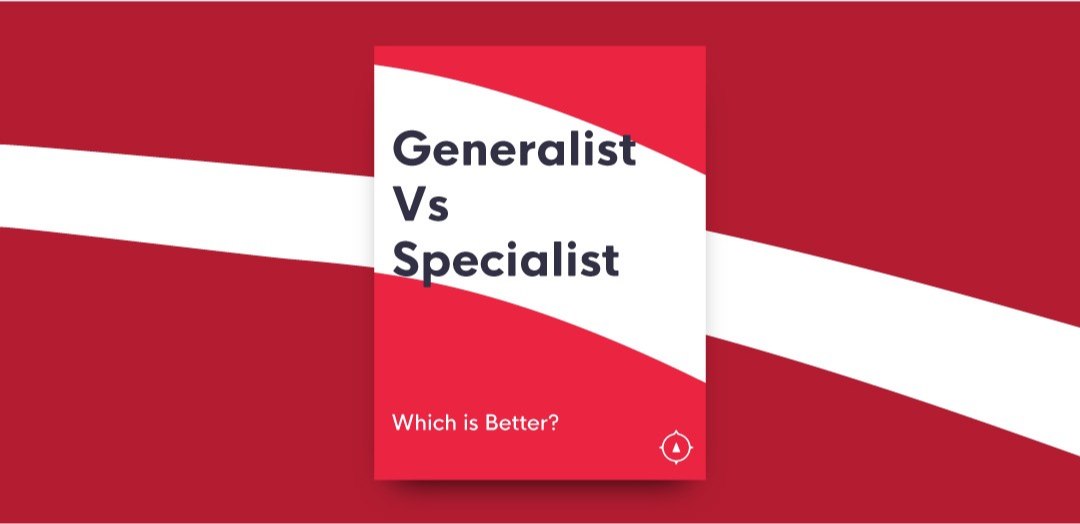When you start to focus on growing your skills, you poke around and borrow styles from all over the place. Borrowing ideas as a designer is a good way to figure out your own style. You may work on figuring out new tools, software, new material, or messaging. As your skills begin to improve, you may be wondering what you want to be doing as a designer.
Should I specialize or should I do a little bit of everything?
One thing is certain: figuring out what you want to be doing and who is in your target market for design, can be tough when starting out.
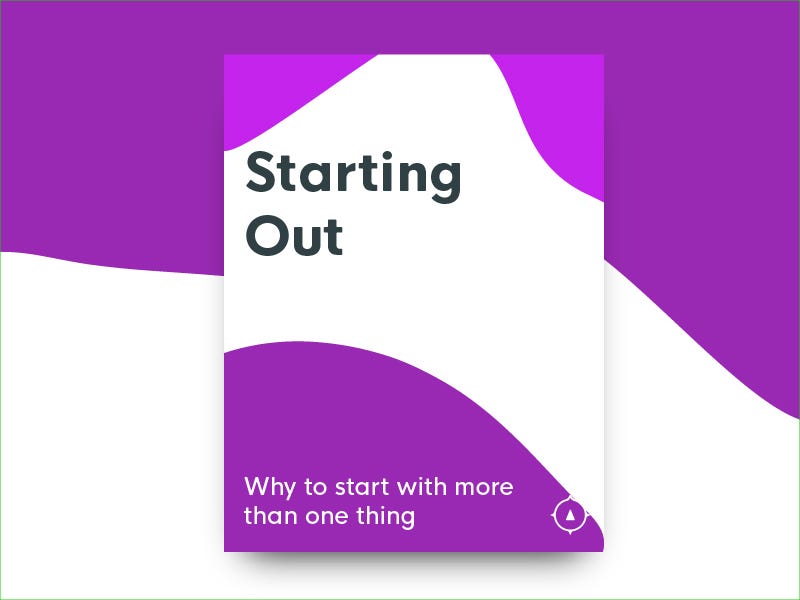
Experimentation is actually a good thing.
As a creative professional, I hope you have some form of portfolio up where you show the work you have done and/or are currently working on. If your portfolio is focused on gaining clients and posting experiments is going to be off brand, try other platforms.
The way you choose to post, how often, what type of content, even the place you choose to post becomes part of your brand eventually. Even if you only use Facebook or Twitter to share your design work.
If you haven’t figured out what you want to do with your design skills, I give you full permission to experiment.
Try several things: experiment with crazy color palettes, build/design a user interface, create an entire (fake or paid) identity system for a local shop or service, and redesign your portfolio again.
What you are working on is to figure out what kind of work you enjoy doing. You can definitely attract work by simply putting out the things you experiment with.
As you begin to work with new clients or companies, you start to really figure out what work you do or don’t want to do. It’s time now to figure out your ideal market.

Your interests + your history + your skills = your market.
Having spent time experimenting, figuring out what you are good at, and what you do or don’t enjoy doing isa good indicator of what kind of Design work you’ll do. You move forward with one type of design or a handful of skills and find that people from all over are still asking you for work, further keeping you split and doing random projects.
One of my friends, Justin Jackson, recently had a talk on stage at MicroConf, a conference for self-funded startups. He spent some time on what you can do to figure out where you can apply your [design] skills by either going vertical or horizontal.
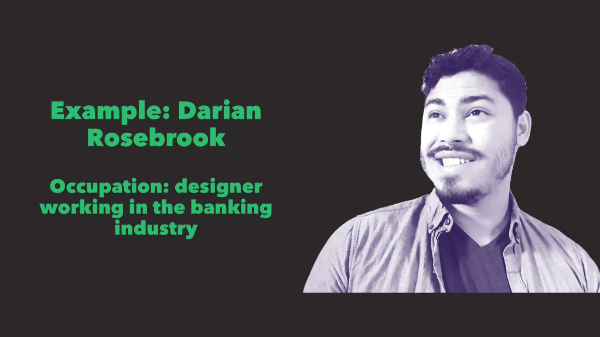

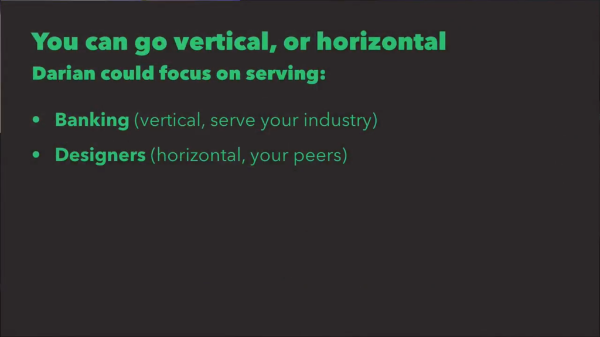
His entire talk should be available in the near future, but he used me as an example of how to figure out where you are most equipped to apply your skills.
One thing a lot of you might not know about me is that I work as a banker 40hrs a week (as of August 2017) and am overlapping careers as a designer (for another 30+hrs a week).
I have the option of using my skills and going further in the banking industry by recognizing things that I can apply my skills towards an opportunity there, or I can choose to go horizontal and focus on helping other designers (what I actually chose to do).
This cross section creates 2 pathways right off the bat to allow you to utilize what you know about one industry and apply it to the other industry.
The thing about serving markets though, depending on your goals and willingness to have what you do support you, you need to find markets that are easy to reach and willing to pay for your services.
](https://cdn-images-1.medium.com/max/2000/0*F_xiZE9Rqxbjh6yu.png)

Do I even need to specialize?
When you need to go see a doctor, a lot of times you head to an office and have somebody check out what your situation is. A lot of these doctors have experience doing all sorts of things, and therefore they get a lot of patients.
When there’s something that they have experience treating they treat it, but every now and then, sometimes they have to refer you to a specialist.
I went to urgent care once after slicing a finger open. Usually my insurance takes care of the cost, or it’s around $100 at most.
They referred me to two other doctors until a specialist on fingers had to come in and carefully work at putting that one back together correctly (as much detail as I’m willing to go on the topic). That bill, because I live in America with non-universal healthcare, was over 1000 dollars for stitches.
As designers, there are people who are considered a Jack-of-all-trades and those who are highly specialized in their area of expertise.
A specialist should be highly skilled in their area of expertise. Thus because the job will be done correctly and efficiently, without much need for fixing or revisions, they save time for that person and can charge more for their work.
I’m not going to fight too hard for either side, but let’s look at some pros/cons.
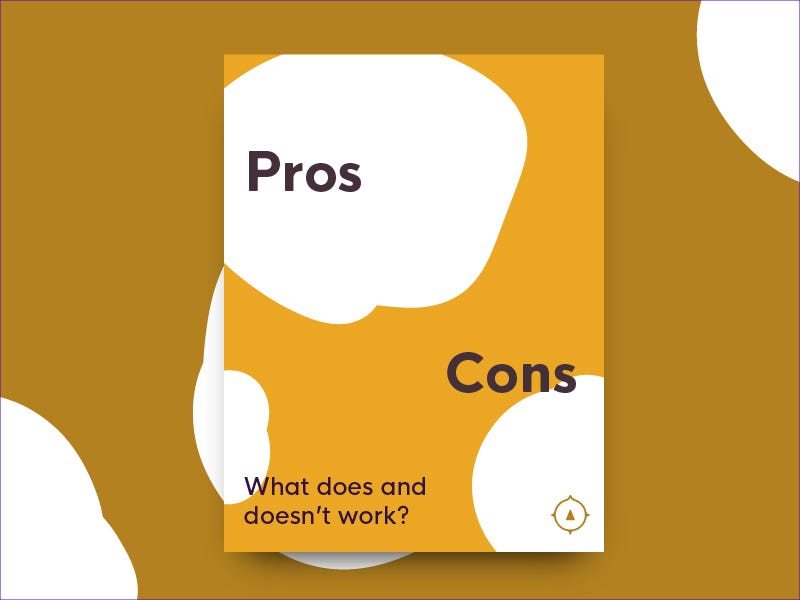
Generalist
What sets Generalists off on their path is that they have a love for doing all sorts of work. It’s like how I told you to experiment, many of your skills can be applied equally across several disciplines.
Pros:
You have the ability to take on all types of clients
Your target market is huge, basically anyone requesting design work can work with you
You can choose to take on whatever project comes your direction because of the volume of requests
You can pivot to any area of Design you want just as long as you have skills to do it
Cons:
Competition for projects is so dense that can be difficult to stand out
Competition also brings your prices down, you’ll have to bid for work very aggressively
Your work might seem random or not congruent when looking at your portfolio
A client or employer might find it difficult what your strengths are and what you can bring to the table
Specialist
Specialists are capable of taking a highly specific problem and creating a highly specific solution.
Pros:
Your work is valuable to a client/employer because you specifically solve problems and offer specialized solutions.
Your work looks consistent (or consistently improving)
You can position yourself as an expert or as a consultant and charge more for your work
More things may be referred to you as a result by people who can’t do your job as effectively
Cons:
There’s not a lot of work unrelated to your niche that you can put in your portfolio
You may have to turn down or outsource unrelated work inquiries
It can be the only thing you are known for, making it harder to switch on the future
It takes a lot of ongoing education, practice, and time to do one thing specifically

Selective projection
I emphasize the importance of selectively projecting what you want to be known for.
Whether you are going to choose to specialize or generalize your work, this is going to be very important to start doing. If you are like me and in the process of changing careers, you should be selectively choosing what you share about yourself.
When we go into building your personal brand next week, we’ll revisit this topic.
Sean McCabe from seanwes [has talked plenty times of the “box” people put you in](http://seanwes.com/tv/028-theyre-going-to-put-you-in-a-box-curate-what-you-share/).
We see so many people during the week or even on a daily basis, we don’t have enough room in our head to remember everyone’s complex lives. So, due to our need to simplify and save space, we put people into a box.
This box becomes the way people choose to see what you do or how they introduce you to other people.
One of our favorite boxes to categorize is our junk box. We throw everything into that box that doesn’t really fit anywhere else in our spaces. So if you’re projecting too many things, maybe it might do you good to selectively project what you do to avoid being forgotten.
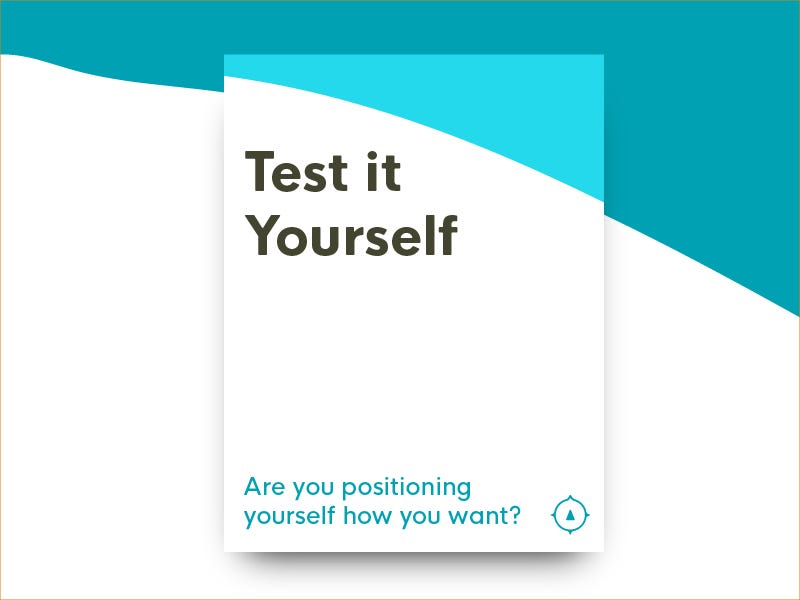
You can test what box you are in right now
Curious if you’re on the right track?
I hope this gives you enough insights to be able to start figuring out where you want to start using your skills as a designer. We spend so long working on our craft that sometimes we don’t know if we’re heading in the right direction.
I’m working 40hrs a week as a banker, but I only talk about my work as a branding designer. I chose to do things this way because I get a small amount of referrals from word of mouth and its my way of controlling that.
As a test, I wanted to see if that was working, so I sent out a message to my friends on Facebook asking them this:
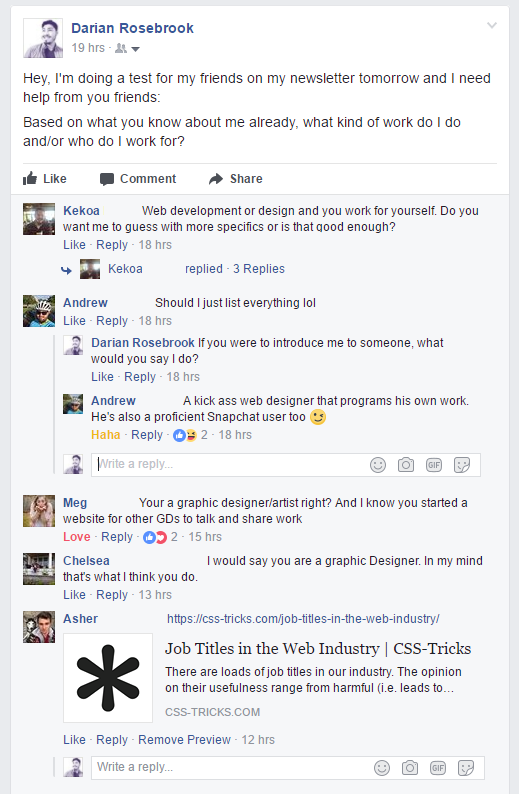
I was hoping for the answer “logo designer” or “branding designer,” and I guess I’m on the right track, but I still have some work to do in order to be seen for what I want to be.
Let’s try that this week.
Send this message to your friends, family, followers:
“Hey friends! Doing an expiriment today: Based on what you know about me already, what kind of work do I do for a living and/or where do I work for a living?”

Struggling to get traction in your design career?
You are not alone, every week we go over ways to market yourself better by improving your design skills, your personal brand, and other topics to further develop yourself as a designer…
We’re building a community for the designers like you.
The Compass of Design Community is a growing place of positive and driven designers who are working at being masters of their craft. Whether they’ve been designing for years or are just getting started on their journey, you will find this a place where you can get the critical feedback on your work and connect with like-minded people.
Sign up for the Compass of Design newsletter to be notified when we reopen registration for the design community (:
